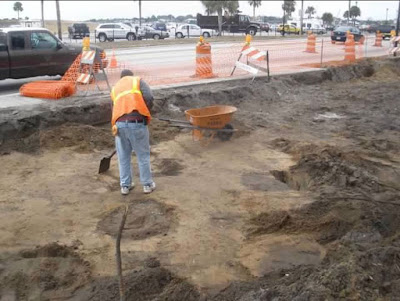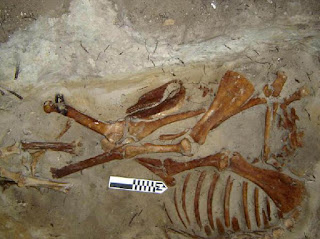Crawling through St. Augustine Archaeology: Week 2, the 17th Century
Every October, we traditionally host our St. Augustine Archaeology Pub Crawl to celebrate International Archaeology Day. Unfortunately, this year we are unable to host the event due to restrictions on public events because of the global pandemic. However, we'll be bringing you a virtual crawl through the City's archaeology through a weekly series featuring archaeological research, links to more resources, and fun beverage pairings. Keep your eyes peeled for a new post every Friday.
This week, we'll explore the growth of St. Augustine during the 17th Century.
The Sites
During the 17th century, St. Augustine remained a small colonial outpost on the edge of an expanding Spanish Empire in the American Southeast. The town slowly expanding north and south, but still relied heavily on imported goods to support the local economy. A few large, notable sites to highlight from this period.
The first site I want to highlight it the Plaza de la Constitucion. While it does technically have its roots in the late, late 1590s, I'll argue it really came into it's current use as the Plaza in the 17th century! Archaeological evidence has revealed that in the earliest days of the downtown settlement, the plaza was actually a row of houses. Excavations found wells evenly spaced across the area, which happened to correspond with records of the lot size for colonial towns as laid out by the Law of the Indies, which dictated what Spanish colonial towns would look like.
 |
| Excavations of a barrel well from the Plaza in 1993. Photo: UF Governor's House Library. |
The Plaza has been a public space through the centuries, and the archaeology of the site reflects this. Features include numerous wells that were probably in public use, trash deposits suggesting public markets set up on the property and even military items reinforcing the use of the space for a parade ground. Here's an article on the 2010 excavations at the plaza.
From the beginning, the Spanish Crown and their residents in St. Augustine had some disputes with other colonial powers about who owned what in North America (ever heard what happened with the French at Fort Caroline?). So it's no surprise that fortifications have been an important part of the City's history for centuries. Archaeologists found evidence of fortification at the first settlement at the Fountain of Youth (remember last week's blog?). And in the 17th century, the Spanish built at least three wooden forts north of town to offer some protection to the town's residents. Excavations along Aveneda Menendez, across from the Castillo, revealed large post holes, suggesting this was the location of at least one of these forts. Click here to read an article about the investigations into one of the old wooden forts.
 |
| Large post holes could be from a 17th century wooden fort! Photo: the St. Augustine Archaeological Association. |
With the failures of the wooden forts, and the increase in raids by the English after the founding of Charleston in 1670, the residents of St. Augustine knew they needed something better! And so 1672 begins the 23-year-long construction of the oldest masonry fortification in the continental United States: the Castillo de San Marcos. Check out the NPS website for a virtual tour!
Archaeologists have conducted excavations around and in the Castillo. These have revealed information about the fort's construction and use during the period. We also have a few associated sites like the Coquina Quarry at Anastasia State Park, where the stone was cut for the construction, and on of my personal favorite sites around town: the disarticulated donkey! This site, found over near the State Park on Anastasia Island, is thought to be associated with the quarry workers who cut the coquina. You can read all about the donkey here.
 |
| Excavations of the Castillo's gun deck. Check. out. those. layers. Photo: City of St. Augustine. |
 |
| The disarticulation donkey! Photo: City of St. Augustine. |
You can read more about St. Augustine through the years at the Florida Museum's digital exhibit.
The Beverage
By the 17th century, sugar cultivation in Caribbean was a booming industry and rum became a huge export. While British and French colonies dominate the rum trade, Spanish colonies like Cuba and Puerto Rico began a now centuries old distilling tradition. Caribbean rum becomes a major import to colonies in North America, including St. Augustine, where we know from historic documents it was traded with Native Americans. But I'd be surprised to find out that the residents were not also enjoying a bit for themselves! So kick back this week with a nice Dark and Stormy, or maybe a Cuba Libre while you read up on some local digs.
 |
| This spirit bottle - complete with wire bail - from downtown St. Augustine could have once held rum! Photo: Elizabeth Chambless. |
Text by Emily Jane Murray, FPAN Staff. Image sources noted in captions.